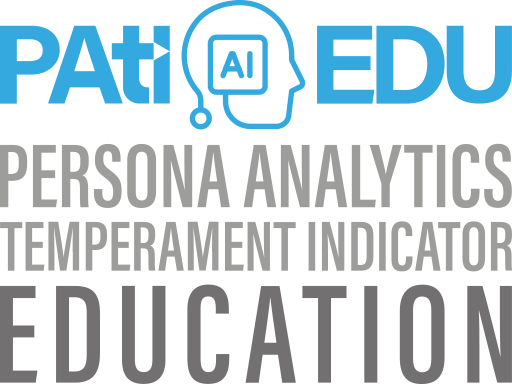PAti-E (Education)



Contemporary education systems, taking into account the heterogeneous nature of students and their individual differences, necessitate the exploration of new pedagogical approaches aimed at personalizing education. In addressing this need, the Temperament-Based Education Model has emerged as a prominent approach. This model aims to optimize the educational process by grounding it in the unique temperament of each student.
Temperament refers to the innate and enduring personality traits that individuals possess from birth and throughout their lives. These natural variations reflect differences among individuals, such as being introverted or extroverted, having analytical thinking skills, or excelling in emotional intelligence. The Temperament-Based Education Model draws upon these natural differences and seeks to design education based on these variations.
The primary objective of this model is to comprehend students’ learning styles and needs in accordance with their temperaments. This assists educators in determining how each student learns best and which learning methods are most effective. For instance, if a student has a visual learning style, they may better grasp and learn through visual materials. Conversely, a student with an auditory learning style may find verbal explanations and interactive discussions more effective. Thus, the Temperament-Based Education Model aims to personalize education materials and methods to maximize each student’s potential.
Additionally, this model offers guidance on how to structure the learning environment based on students’ temperaments. For example, providing a quiet and serene study environment may be more beneficial for an introverted student, while an extroverted student may prefer an interactive and group-oriented approach.
The Temperament-Based Education Model supports students’ personal development while acknowledging potential variations among students. This model enables educators to adjust classroom dynamics and lesson plans to cater to each student’s needs. Consequently, it not only empowers each student to maximize their potential but also mitigates negative outcomes such as discrimination or exclusion.
Another significant aspect of the Temperament-Based Education Model is its support for students’ social and emotional development. The model equips educators with tools to understand students’ emotional needs and guide them accordingly. This fosters the development of emotional intelligence and empathy among students while facilitating the formation of positive social relationships.
Furthermore, this model enhances student motivation. Students exhibit greater interest and enthusiasm when they experience learning in a manner aligned with their temperament. This, in turn, encourages their overall success.
The Temperament-Based Education Model represents a significant approach to understanding individual differences and personalizing education. This model enriches educational practice by responding more effectively to students’ learning styles and needs while simultaneously supporting their personal and social development. Nonetheless, successful implementation of this model may require training and support for educators.

Another significant aspect of the Temperament-Based Education Model is its support for students’ social and emotional development. The model equips educators with tools to understand students’ emotional needs and guide them accordingly. This fosters the development of emotional intelligence and empathy among students while facilitating the formation of positive social relationships.
Furthermore, this model enhances student motivation. Students exhibit greater interest and enthusiasm when they experience learning in a manner aligned with their temperament. This, in turn, encourages their overall success.

